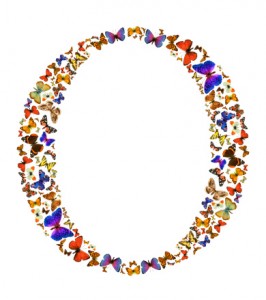Circus of Dreams (Part 7)
By Asher Crispe: November 23, 2012: Category Decoding the Tradition, Inspirations
To Light Up the Night
 On special occasions when the Priestly blessing is said on Holidays, the congregation responds with a remarkable passage that is all about the sweetening of dreams:
On special occasions when the Priestly blessing is said on Holidays, the congregation responds with a remarkable passage that is all about the sweetening of dreams:
Master of the universe! I am Yours and my dreams are Yours. I have dreamed a dream and I do not know what it is. May it be Your will, God my God and God of my fathers, that all my dreams concerning myself and concerning anyone of Israel, will be for good; whether dreams that I dreamed about others, or whether I dreamed about myself, or whether others dreamed about me. If they are good [dreams], strengthen and reinforce them, and may they be fulfilled in me and in them, like the dreams of Yosef [Joseph] the righteous. But if they require healing, heal them like Chizkiyahu King of Yehudah [Judah] from his illness, like Miriam the prophetess from her leprosy, like Naaman from his leprosy, like the waters of Marah by Moshe [Moses] and like the waters of Yericho [Jericho] by Elisha. As You have changed the curse of the wicked Bilaam from a curse to a blessing, so will You change all my dreams concerning myself and concerning all Israel to good; and guard me, be gracious to me, and favor me.
From this passage, we could conclude that while the priests (Cohen) open a portal into the amorphous and amorous (after all, they bless the people with ‘ahavah’ or love) the people who are the recipients of the blessing may then harness its transformative energy. There is nothing like love to motivate change. Perhaps we could even say that love derives from the underlying ‘nothing’ or no-thing that retains the plasticity that facilitates all change. As agents of transformation, the Priests/Cohanim (both literal and figural) cast about in the standing reserve of potentiality, the pool of possibilities (bracha ‘blessing’ relates to braicha or ‘pool’), until the right solvent can be found to dissolve the negativity of the negative and replaces it with a freshly washed and sanitized positive quality. Diseases are healed. Curses become blessings. Everything is refurbished. The Cohen of the community and the Cohen within me have the power to recondition reality. On account of the initial state of ‘not-knowing’ the nature of my dream, the dreams of others or even the big Dream (“I do not know what it is”), I am left in an unknown night of epistemological darkness. Dreams are the unprocessed ‘food’ that consumes me while I consume them.
These dreams hover over my head fluttering in my unconscious while refusing to land and connect with my rational mind. If we want to depict this with utter geometric simplicity, we need look no further than the Hebrew vowel called a holam which shares the same root as chalom meaning ‘dream.’ This diacritical mark is a detached dot placed over the letter. It is the only vowel that is placed above the letters. A standard way of notating it would be to write the letter Vav (which is basically just a vertical line [ו]) and crown it with a dot: וֹ . Most appropriately to our exploration of the connection between the Hebrew letter Samech and dream, this vowel who names means a dream, make a “o” sound. The mouth forms a circle to utter the “o”.
In Hebrew, the letter Peh means a mouth. It can also mean (with a slightly different vocalization that uses the holam vowel) ‘poh’ or ‘here.’ Place the dream-vowel or holam in the word for mouth and it anchors the dream in the here and now. It makes the otherworldliness of the dream present just by speaking about it. The strangeness of the dream keeps it at a distance until I try to interpret it and then the manner in which I speak of it brings it closer. I bind myself to the dream just by speaking about it. Prior to interpretation, it could not affect me as Rav Chesda in the Talmud (Brachot 55a) states “a dream uninterpreted is like a letter unopened.”
Each information packet in life must be open or it remains inaccessible. This is somewhat akin to the popular saying that “what I don’t know can’t hurt me” with one major caveat: that which is unknown to me is not ready and waiting to be known. In the dream-world and the world-as-dream, the fragmentary information that I receive does not necessarily have a predeterminate significance. The signifiers in a dream are free floating like the dot above the line of the Vav in our depiction of the holam. These signifiers require an interpretive discourse to bind them together and the affix them to signified objects. ‘This’ means ‘that‘ only when language cuts and sews the cloth of the dream.
My first experience of the dream resides in the pre- or proto-linguistic register (like the undeveloped dot that flies about the letters. The holam/Chalom acts upon the letter (vowels are sometimes referred to as tanuot or ‘movers,’ primal forces that assemble and build the consonants into syllables). Only then is anything articulated. Hence, dreams both surpass and establish ordinary language, just as language catches and releases dreams depending on how finely its netting is woven.
Sometimes the signs in a dream are considered to be in a chaotic state. Chassidic discourses on the theme of dreams put forth the notion that dreams have quantized units of signification or ‘letters’ but these letters are scrambled having been subject to tremendous information entropy. Different powers of the soul have different types of letters associated with them. In this case, the letters of the dream our located within the level of the Crown or ‘Keter.’ In psychoanalytic terms, the Crown is that which is attached to the head (and mind) but also encircles it from above–an image that resembles the superconscious or unconscious of the soul. Transcending the conscious mind, the letters of the Crown are the unconscious roots of language. Linguistic significance at this level remains entirely ungrounded and nomadic. Despite this, dreams as the experience of the unconscious par excellence, are structured like a language (an idea that was more recently popularized by Neo-Freudian psychoanalyst Jaques Lacan).
Noting that the symbol for the unconscious in Kabbalah is the circular Crown, this image once again calls to mind the letter Samech. The drawing down of unconscious signs into our ‘day-to-day’ consciousness (which is also ‘consciousness as day’ verses ‘unconscious as night’) happens by way of the mouth (peh from Peh the letter). Verbalization skills (mouth) also provide translation and commentary, the sum total of which funnel into an interpretation.
Given this set up (as well as the reference in the passage of response to the Priestly blessing), it is not surprising that Yosef/Joseph is our prime example in the Torah of a dream interpreter. When we closely examine the spelling of his name in Hebrew, we discover that he is the only one of the 12 children of Yaakov/Jacob (the founders of the 12 tribes) who possess a Samech in his name: Yosef/Joseph in Hebrew is Yud-Vav-Samech-Peh or ‘Feh’ [יוסף]. Not only that but the letter that immediately precedes the Samach is a vowel letter marker–in this case a Vav–with a holam or ‘o’ sound’ atop it. Thus, central to the four letter name of Yosef/Joseph, the two middle letters are the Vav (which means a connector or ‘hook’) as the placeholder for the holam vowel which means a chalom or ‘dream.’ He ‘is’ his name. Contained within him is both the articulation of a dream (vowel) and the meta-symbol of dream reality (the circle of the Samech).
 What about the first (head of the word) and last (end of the word) letters of his name? The head or first letter is the opening mentality that encapsulates the word in its entirely from the start of its unfolding (spelling). In this case it is the letter Yud, which according to the kabbalists, resembles a seed. The Yud is the pure formless potential of Reality (especially Reality as dream). The finality of his ‘signature,’ the last letter where he meets his ‘end-objective,’ the concluding consciousness of the process of identifying him through his name, is the letter Peh. Peh, as we already explained, means both ‘mouth’ and ‘here.’ This suggests that all of the chaos and shapelessness of the dream state ultimates follows after the mouth of Yosef/Joseph who interprets it.
What about the first (head of the word) and last (end of the word) letters of his name? The head or first letter is the opening mentality that encapsulates the word in its entirely from the start of its unfolding (spelling). In this case it is the letter Yud, which according to the kabbalists, resembles a seed. The Yud is the pure formless potential of Reality (especially Reality as dream). The finality of his ‘signature,’ the last letter where he meets his ‘end-objective,’ the concluding consciousness of the process of identifying him through his name, is the letter Peh. Peh, as we already explained, means both ‘mouth’ and ‘here.’ This suggests that all of the chaos and shapelessness of the dream state ultimates follows after the mouth of Yosef/Joseph who interprets it.
If we distill his name down further, the rules of Hebrew grammar let us drop off the Yud and the Vav of his name (as they are both considered less essential ‘vowel’ letters along with Hei and Alef). Consequently, the sub-root of Yosef/Joseph is just Samech/Peh (Feh) which represent the dream (undifferentiated circle) and the interpretation (mouth that differentiates it).
The nature of Yosef’s (Joseph’s) dream interpretation skills will be our subject for the continuation in Part 8.
http://www.interinclusion.org/inspirations/circus-of-dreams-part-8/
http://www.interinclusion.org/inspirations/circus-of-dreams-part-6/
Circus of Dreams (Part 7),













;)
;)
;)
;)
;)
;)
;)
;)
;)
;)
